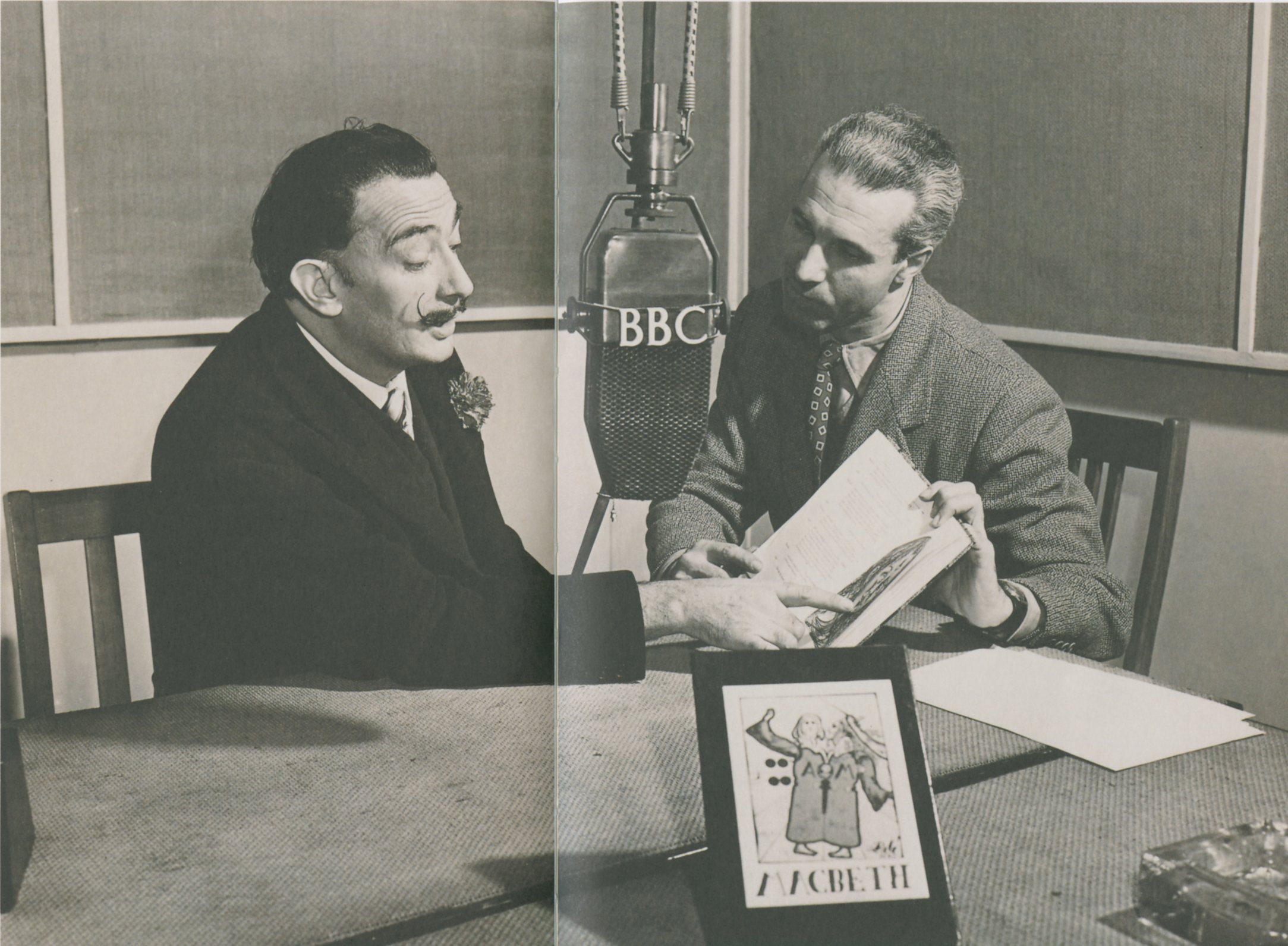For the Love of Shakespeare
Curated by Abigail Wunderle and Shaina Harkness
Salvador Dalí, known for his paintings, drawings, and even his own writings, was also an illustrator for many books. “Dalí worked in this field of creation so often because, rather than an amusement, the work was a necessity for him. Dalí had to express himself and any medium that allowed him to do so was valid. That was why he never missed an opportunity to work in publishing,” (Dali, a life in books, p.344).
This series of digital exhibitions, broken up into several parts, will focus on illustrations Dalí created for commercial books, some of which are rarely seen. This series will also focus on the symbols Dalí inserts into the illustrations, promoting his own iconography. “Salvador Dalí used symbols repeatedly in his artwork. He was influenced by Sigmund Freud’s idea that dreams can be understood symbolically – where each image has its own interpretation – Dalí approached his work this way” (Dalí Museum-Peter Tush, Curator of Education). Shown here in the book illustrations are the main symbols, as well as other Dalí symbols. Viewers will then be given an opportunity to discover the same symbols in works from The Dalí Museum Collection. The use of these specific symbols shows how Dalí inserts himself throughout his artwork, even in books.
Salvador Dalí was greatly interested in Shakespeare, and much of his work was in his personal library.

As You Like It
As You Like It subverts the traditional rules of romance. Gender roles, nature and politics are confused in a play that reflects on how bewildering yet utterly pleasurable life can be. (From the Royal Shakespeare Company). One can certainly see how the themes in the play attracted Dali, who reveled in the confusion of his audiences.
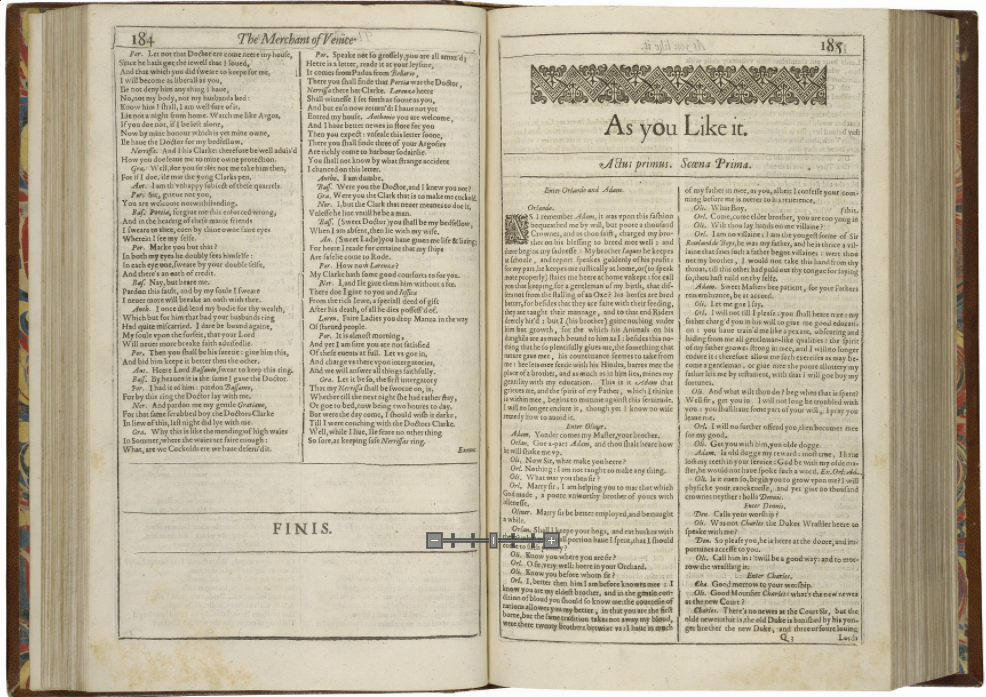
As You Like It was first printed in the collected edition of Shakespeare’s plays, known as the First Folio, during 1623. No copy of it in Quarto exists, for the play is mentioned by the printers of the First Folio among those which “are not formerly entered to other men.” By means of evidences, external and internal, the date of composition of the play has been approximately fixed at a period between the end of 1598 and the middle of 1599.
Through the years, As You Like It has been depicted in many ways and by many artists. Below are a few renditions captured by the Folger Shakespeare Library. Salvador Dalí is even included in this special group of actors and artists.
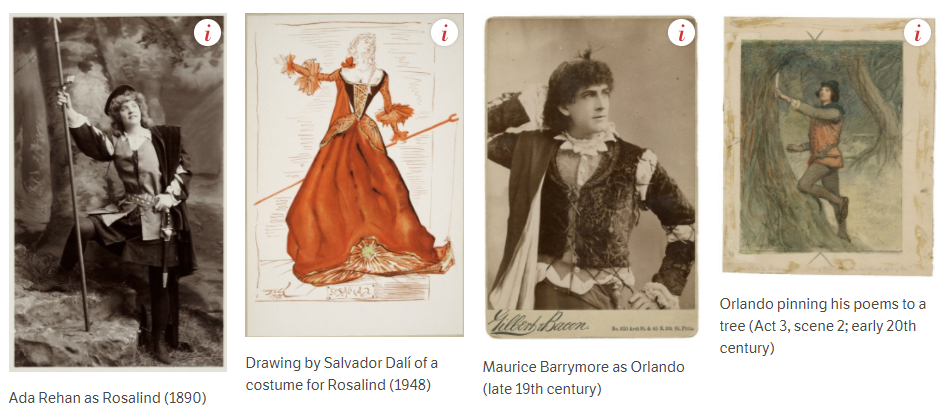
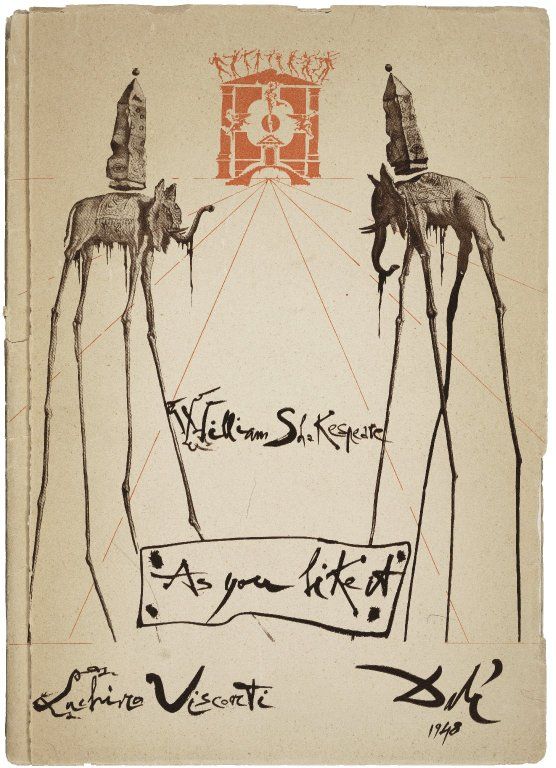
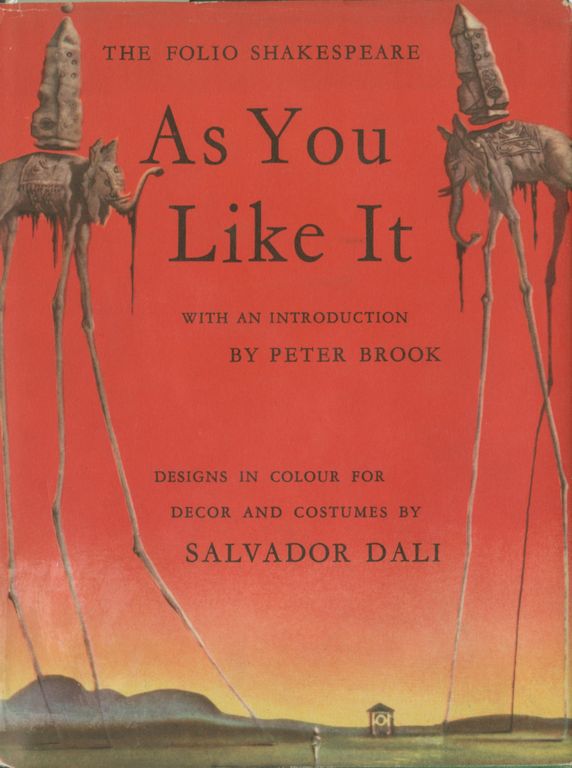
When Dalí returned from the United States in 1948, he met Luchino Visconti, the Italian theatre, opera and cinema director, and screenwriter. Visconti decided to stage As You Like It, and while in Rome Visconti said, “I was looking for an eccentric designer, a magician…” (Dalí Shakespeare Visconti, p. 19) Then, he met Dalí – the ultimate eccentric and magician. Dalí became immersed for an entire month with complete artistic freedom, designing the sets and costumes for Visconti’s production, and later that year As You Like It was performed on stage with Dali’s designs. He even designed the ballet program (above).
Five years after the ballet, “In their edition of William Shakespeare’s As You Like It, the publisher, The Folio Society, London included the drawings Dalí made for the staging of the play.” (description from Dalí By the Book exhibition file, 1996)
About As You Like It, Dalí says “I like [it] very much because it represents the most typically anti-existentialist work, the archetype of the immediate mode of existence, biologically joyous and divine, opposed to the ephemeral theory in vogue today of a sordid Debussian masochism”(Dalí Shakespeare Visconti, p. 9)
Dalí explained his designs made for this play as, “My sets have been inspired by an autumnal, ammoniacal, thoroughly sterilized mimeticim; my costumes are morphological and, the better to serve my viewers, even prophetic…” (Dalí Shakespeare Visconti, p. 9)

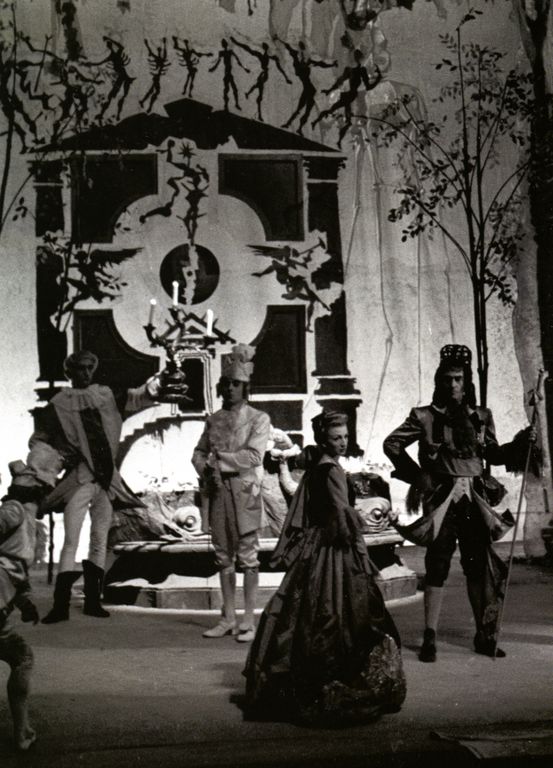
In these side by side views, you see how Dali’s sets and costumes came to life on stage!
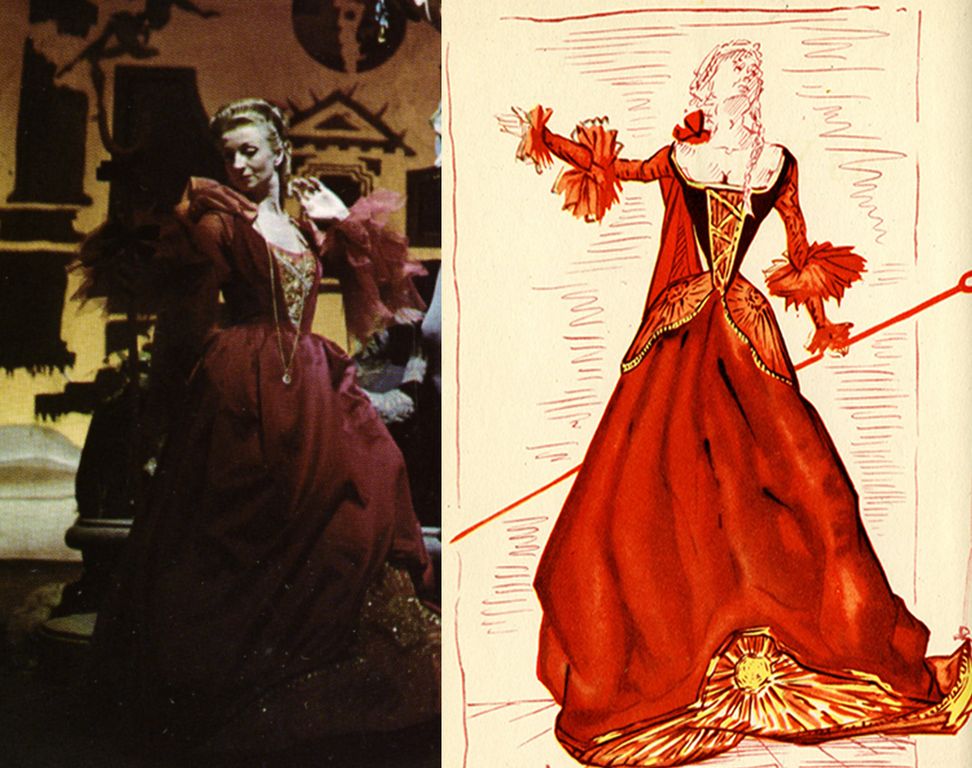
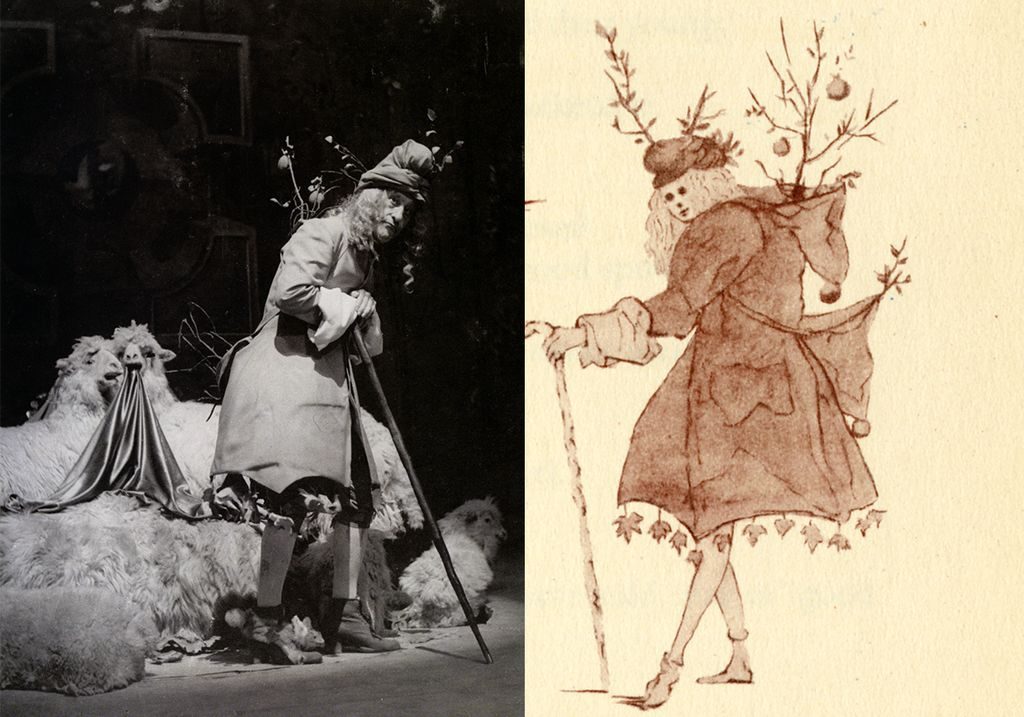
Dalí Symbol…The Crutch!
“A crutch is a means of support. Dali’s use of the crutch is more for emotional support than physical support. The crutch holds up parts of the body symbolizing our handicaps and weaknesses. It also symbolizes death and snobbery,” (Dalí Museum).
Notice that Rosalind is shown holding a crutch in this illustration. “While Dalí felt that crutches were particularly useful as props for aristocratic snobbism, in this case the crutch refers to a fear of impotence, which has been projected onto the father. Unlike other works where the crutch is a symbol of death, impotence, or snobbery, here the crutch is used as a symbol of solemnity [“a dignity of a religious or sacred character”] or solace (Docent)” (Dalí Museum).
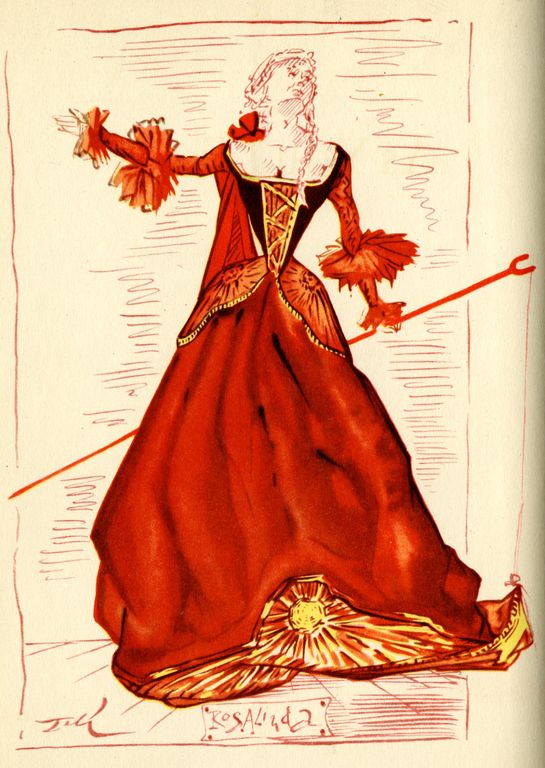
Crutches can be seen in many of Dali’s works. For instance, in the painting Average Atmospherocephalic Bureaucrat in the Act of Milking a Cranial Harp there is a crutch that holds up one side of the skull, or cranial harp. Other crutches can be seen in the Javanese Mannequin and the Weaning of Furniture-Nutrition.
Macbeth
Macbeth, set primarily in Scotland, mixes witchcraft, prophecy, and murder. Three “Weïrd Sisters” appear to Macbeth and his comrade Banquo after a battle and prophesy that Macbeth will be king and that the descendants of Banquo will also reign. (From the Royal Shakespeare Company)
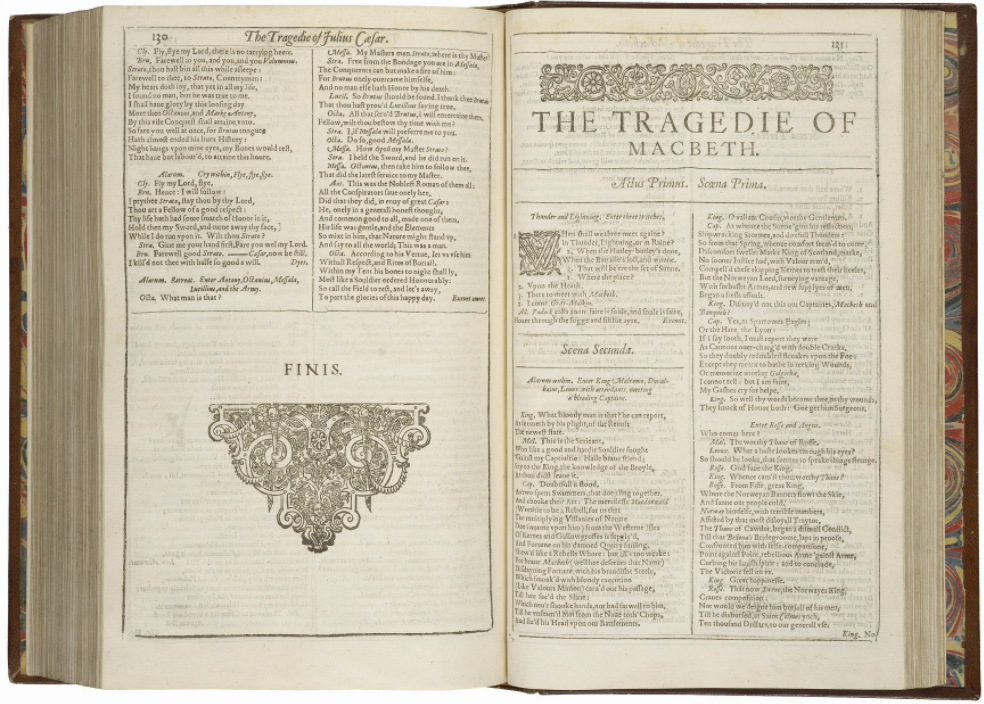
“A tragedy by Shakespeare and his shortest play. Macbeth has been described as a study in fear. It is thought that the play may have been written as a tribute to James I because of its emphasis on the supernatural, a subject in which the king was interested, and its flattering portrayal of the origins of the Stuart line, to which he belonged.” (description from Dalí By The Book exhibition file, 1996)
Dalí on BBC radio advertising his illustrations for Shakespeare’s Macbeth.
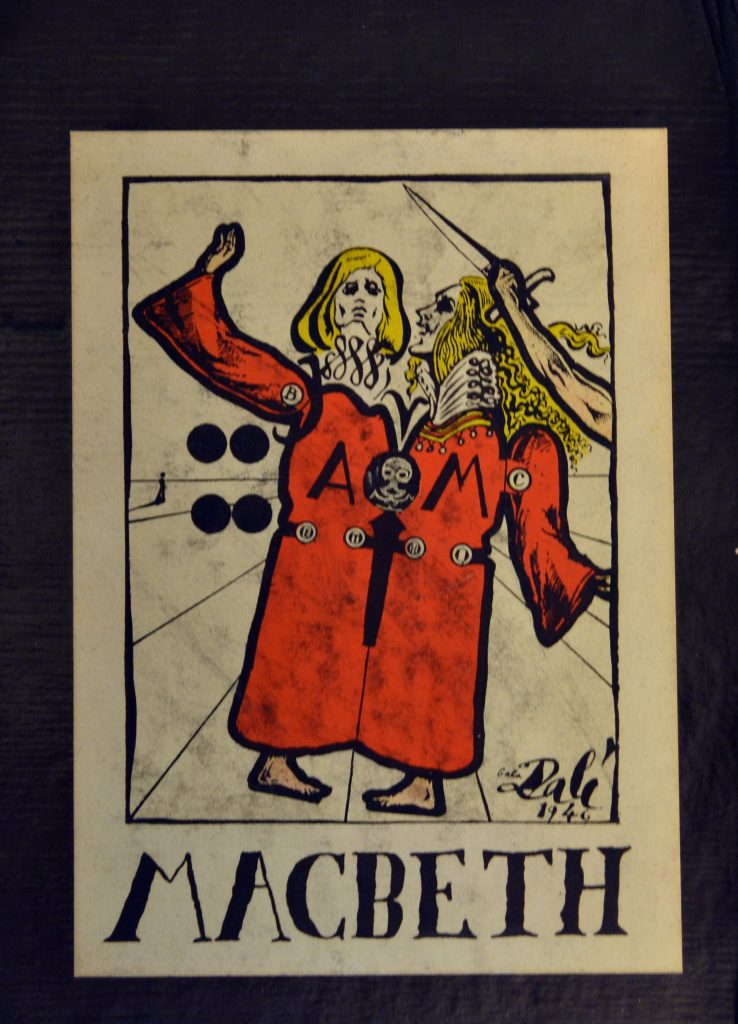
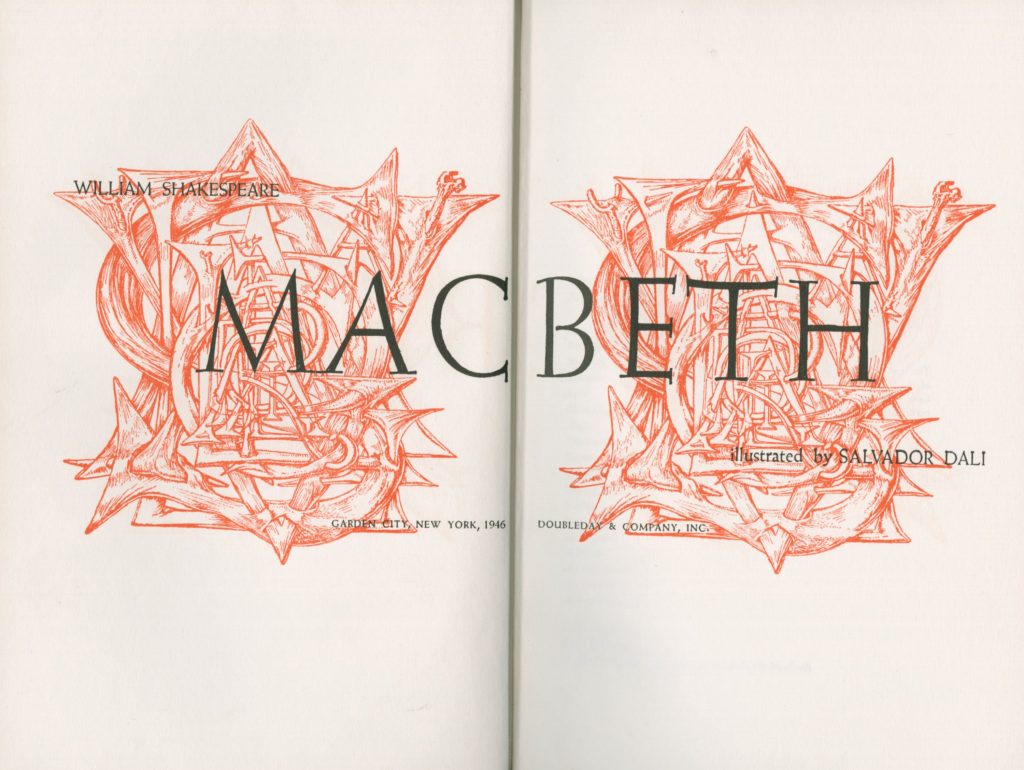
Dali’s genius draftsmanship is most evident with his 13 illustrations (1 is the lettering on the title page above) for Macbeth. As A. Reynolds Morse wrote, ” The point is often missed that Salvador Dalí’s skill with pen and pencil demonstrates a great deal more than a mere technical competence. Dali’s draftsmanship reveals with utmost clarity the initial phases of this intimate creative process.” (The Draftsmanship of Salvador Dalí, 1970, p.7)
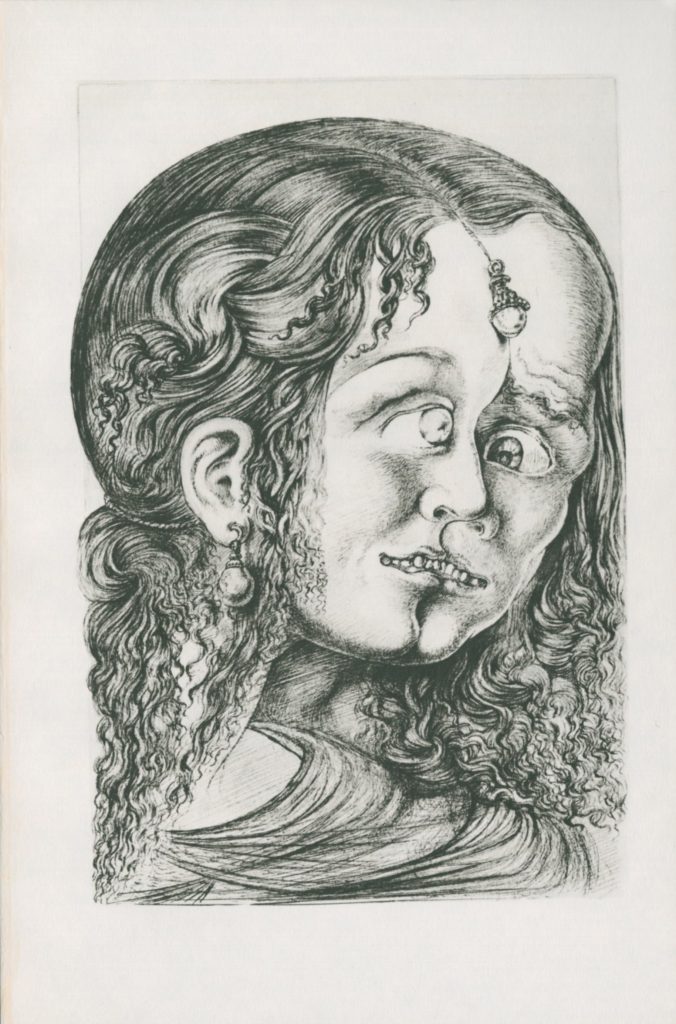
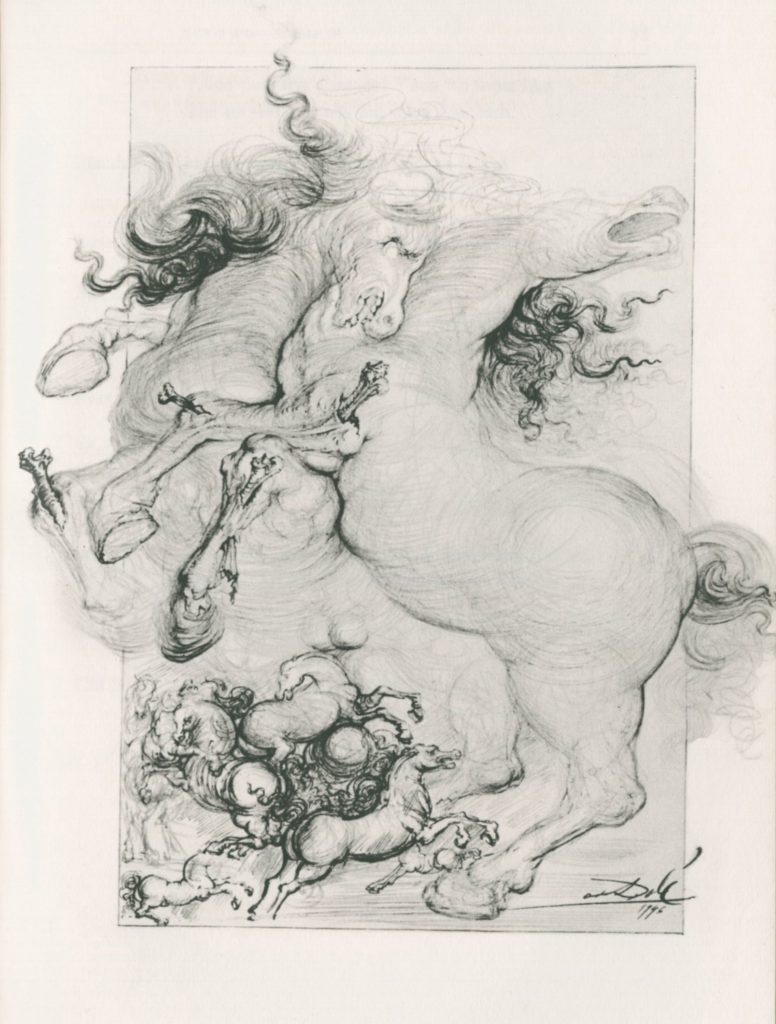
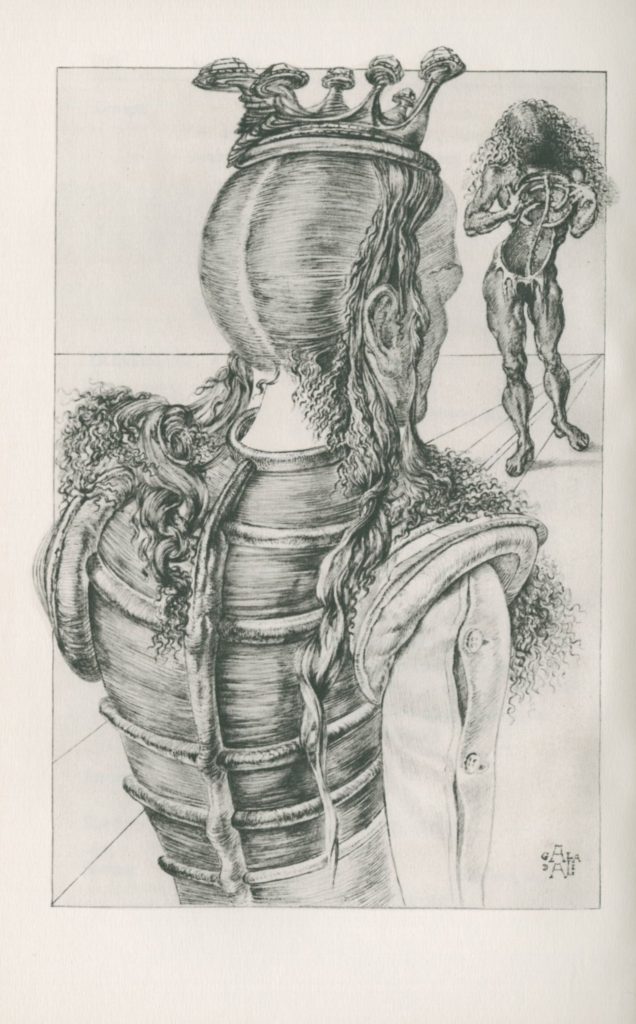
Here in this NY Times article from 1946, Dali’s illustrated Macbeth is approached with caution and some cynicism – an approach that was generally taken by Americans in reference to Salvador Dalí. In the following quote, the author Wolcott Gibbs, is referring to the image above on the far right: “The great picture is one of the season’s most provocative works of art, and in a sense it establishes the tone of the book, though what that is I would scarcely care to say.”
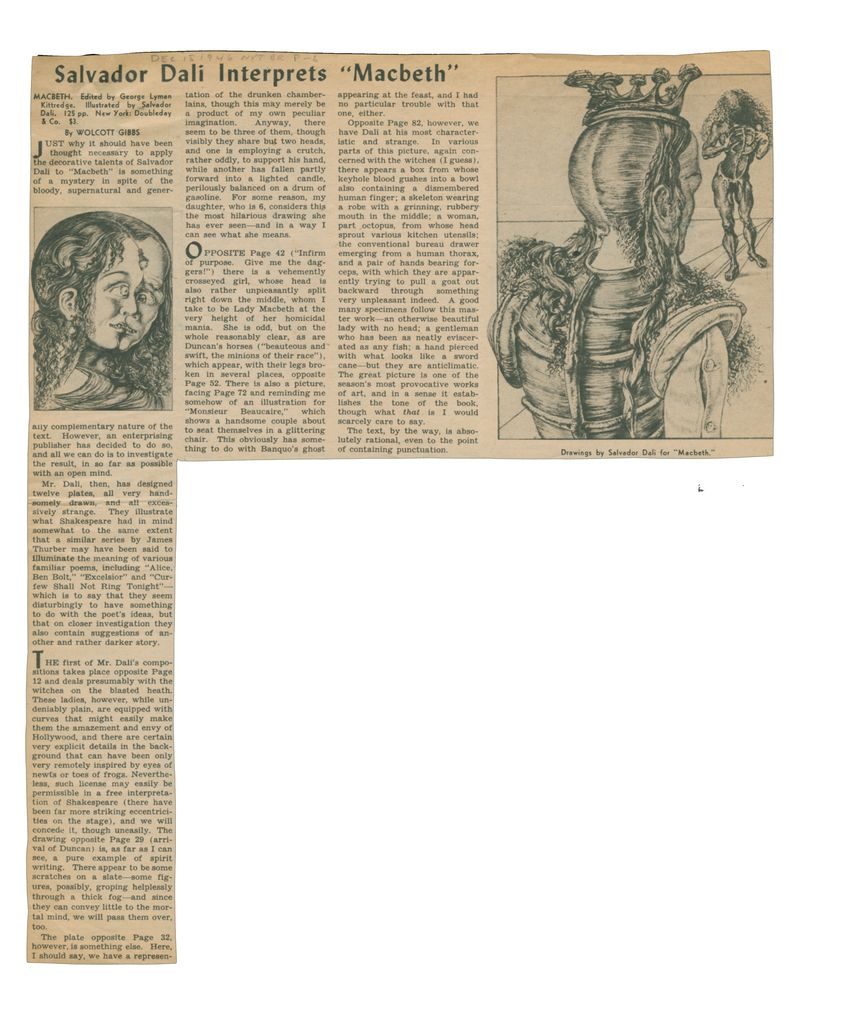
Dalí Symbol… The Key!
This illustration is found in Act IV, Scene I of the play. Macbeth approaches the witches while they are around their cauldrons, and they call for three apparitions that hint at what awaits Macbeth’s future. Within the scene is one of Dali’s most famous symbols – the key.
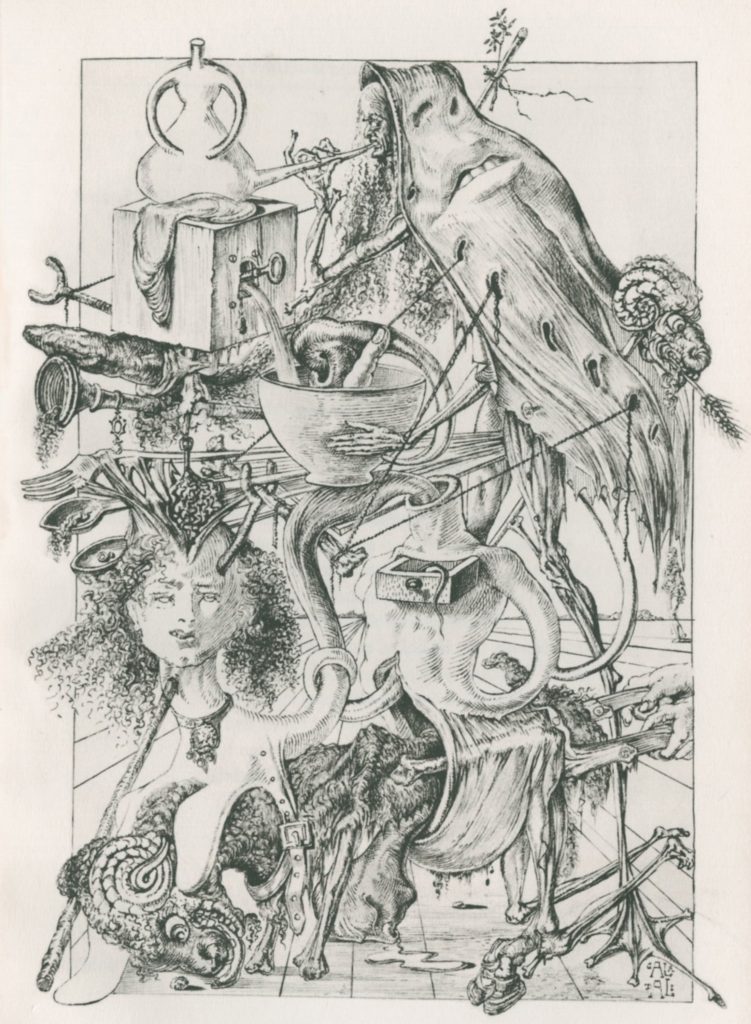
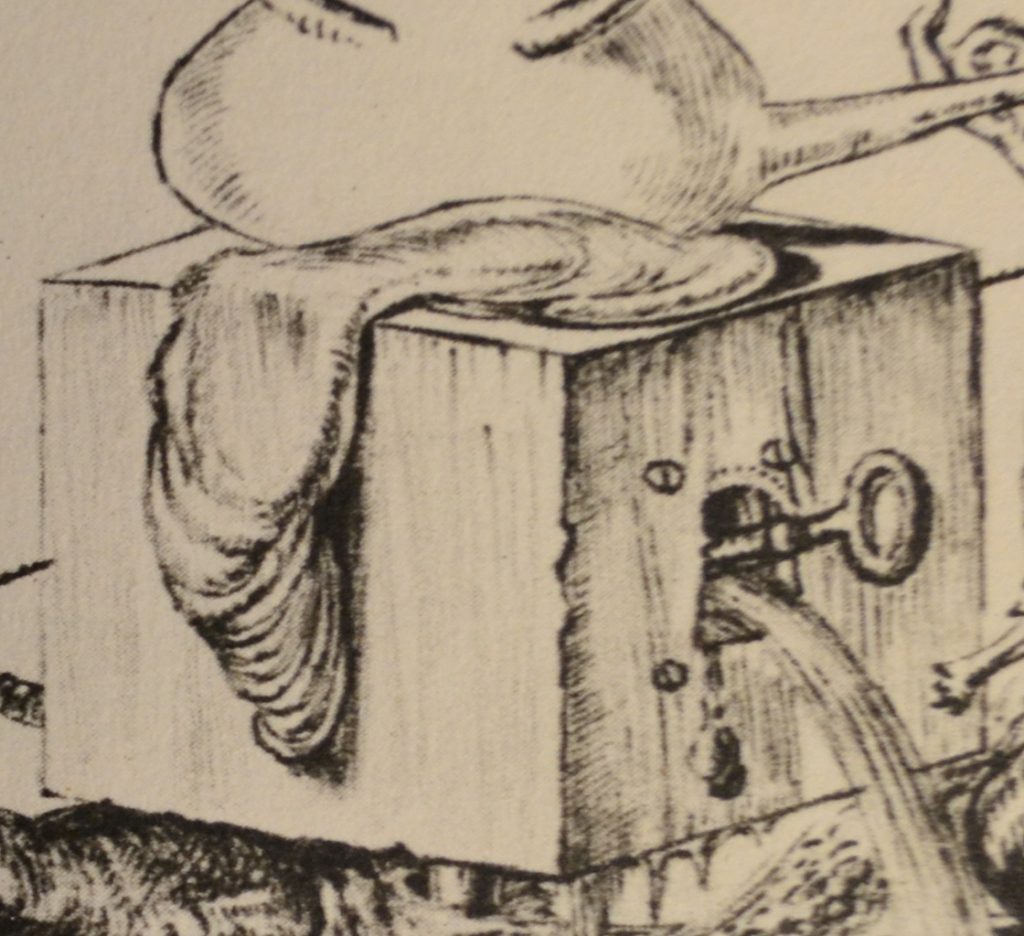
Keys can be seen in many of Dali’s works. The key symbolizes unlocking the unconscious and exploring the mind. The key is a symbol adapted from Sigmund Freud, and also has sexual connotations.(Dalí Museum). Keys can also be seen in the Surrealist Poster (1934), The Font (1930) and Memory of the Child-Woman (1931).
Dalí in Book Illustration Notes
Discovering Dalí in Book Illustrations, Part 1
Discovering Dalí in Book Illustrations, Part 2

